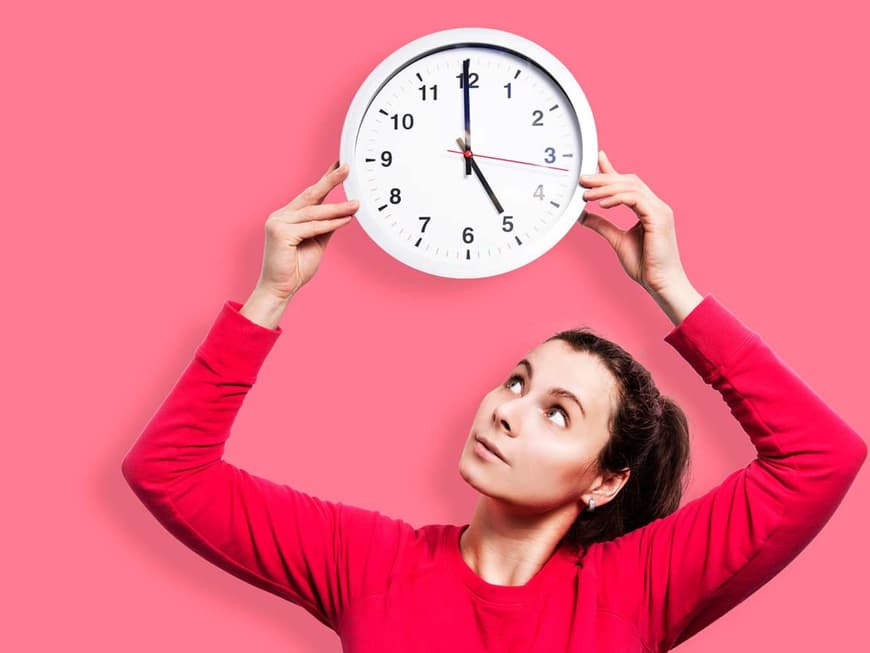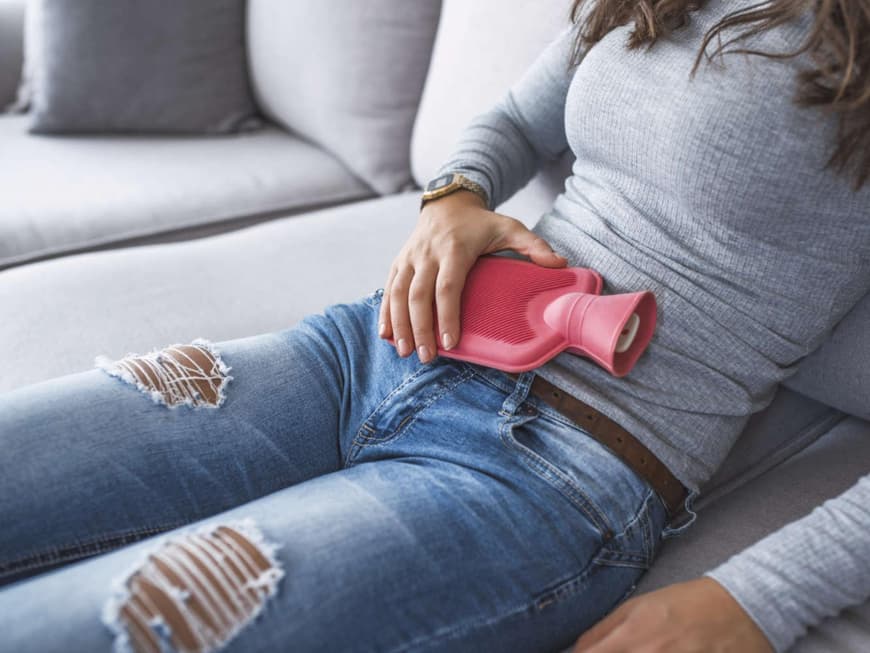Irregular periods: When do we speak of an irregular cycle?
If you believe the biology book, the female cycle lasts exactly 28 days. However, hardly any woman's period is as regular as clockwork. This is because the menstrual cycle can vary. Some women never know exactly when it is their "turn". It can be said that a woman's cycle usually lasts between 23 and 35 days. However, when menstruation occurs varies from woman to woman. An irregular period is when the cycle is consistently shorter than 23 days or longer than 35. This is referred to as a cycle disorder. In addition, it should not fluctuate by more than eight days. Within this range, all fluctuations are considered normal. Important: Keep a monthly calendar of when you have your period. This information is also important for the gynecologist when you go for a check-up at least once a year. Natural fluctuations can be triggered by various circumstances.
Also interesting: Discharge after your period: What's behind it?
Irregular periods: Possible reasons and causes
The reason for irregularities in the menstrual cycle is often today's lifestyle with a lot of stress and too little rest. Irregular hours at work, constant work on the table, plus family and household: this disrupts the rhythm for many women and can lead to complaints and menstrual irregularities. Shift and night work, a cold that has just been recovered from or a longer stay in a foreign country can also cause irregular periods. The same applies to severe weight fluctuations, obesity, anorexia, poor diet and dieting. Fluctuations in the female cycle are also normal after pregnancy or breastfeeding.
Natural remedies for irregular periods
Irregular periods are not a problem. However, if you want to calculate ovulation using the calendar method, it could be difficult - after all, you never know exactly when your fertile days are. The best way to boost your cycle and get it back on track is to lead an orderly life and relax - autogenic training or yoga can help with this. And there are natural remedies to get the cycle back on track and bring an irregular period back into balance: Monk's pepper stabilizes the hormone balance, St. John's wort and lady's mantle are said to stimulate menstruation. Yarrow helps with prolonged menstruation.
Black cohosh (Cimicifuga racemosa) is also said to have proven effective for irregular menstrual cycles and painful periods. It is not only said to help with premenstrual symptoms, but also to alleviate hot flushes during the menopause. For a good effect, 40 to 80 milligrams of black cohosh per day over a period of at least three months is recommended.
Periods are irregular: how illnesses can affect the female cycle
Sometimes, however, there are serious causes behind an irregular period: thyroid disorders affect the hormone balance and the period becomes irregular. Ovarian cysts (also benign) and fibroids (benign tumors) in the uterus, as well as uterine cancer, can also cause the cycle to fluctuate, as can inflammation of the fallopian tubes and ovaries. However, these also manifest themselves through severe abdominal pain and intermenstrual bleeding. Repeated miscarriages can also cause irregular periods and even infrequent menstrual bleeding with contraction-like pain. This makes it even more difficult for couples to have children.
Cycle disorders also occur in old age
Irregular periods are completely normal for young women during puberty. With age, the cycle stabilizes and you and your body become a well-coordinated team. In general, periods should be most stable between the ages of 30 and 39. After that, hormonal changes in the menstrual cycle can occur again - especially from the age of 45, women should expect this, as this is when the body slowly prepares for the menopause. Once family planning is complete, contraceptives should still be used, as women can still become pregnant at this stage of their lives.
Periods come irregularly: In these cases, you should have a check-up
You don't need to be concerned about every irregularity, but if the following problems occur repeatedly, you should have yourself checked by a gynaecologist:
- vaginal bleeding after sexual intercourse
- Spotting or bleeding between periods
- if there is (no longer) a recognizable rhythm in the cycle duration
- more than one period per cycle
- irregular periods with severe pain and very heavy bleeding (tampons etc. have to be changed every hour)
- bleeding that lasts longer than seven days
- with cramping or contraction-like pain
- sudden weight loss
The doctor will first take a detailed medical history (anamnesis). It is therefore also important to keep a record of your menstrual cycle, as the doctor will need this information right now. The doctor will also ask about general illnesses such as metabolic disorders, as well as psychological disorders, weight fluctuations possibly associated with anorexia and medication. All of this can have an enormous influence on your cycle!
If none of the above-mentioned illnesses are present, these are the most common methods to find out where the symptoms are coming from:
- Physical and gynecological examinations
- Biopsy (tissue sampling)
- Measurement of basal body temperature
- blood sampling
- Blood test (measurement of hormone concentration to rule out hormonal disorders: prolactin, thyroid, oestrogens, gestagens, etc.)
- Ultrasound, computer tomography (CT) and/or magnetic resonance imaging (MRI)
How do I calculate my ovulation if I have an irregular cycle?
There is no reliable method of calculating ovulation precisely because of the fluctuations in your cycle. However, there are a few methods that can narrow down the period:
1. measure the basal body temperature with a basal thermometer for 3 minutes immediately after waking up and before getting out of bed.
2. take and check the cervical mucus at the entrance to the vagina. The quality is documented and categorized. The mucus and temperature can then be entered into apps. In this way, it should be possible to narrow down ovulation to four days. You can find more information on calculating ovulation here>>
What happens during the cycle
The first day of your period is also the first day of your cycle. As soon as the bleeding is over, the lining of the uterus builds up again. Egg follicles mature in the ovaries, each containing an egg cell. One of these follicles continues to grow and releases the egg. This is known as ovulation - it takes place around the 14th day of the cycle. The woman is fertile around this day. If the egg is not fertilized, the built-up mucous membrane is shed again with the bleeding. The cycle ends on the day before the next period, after which it starts all over again.
You may also be interested in this:
The taboo subject of menstruation: time to talk about it openly
Heavy periods? Causes, consequences and proven help
Intermenstrual bleeding: What can it mean?
How to make the most of your cycle
PCO syndrome: symptoms, causes and treatment
Diagnosis of endometriosis: the underestimated disease


